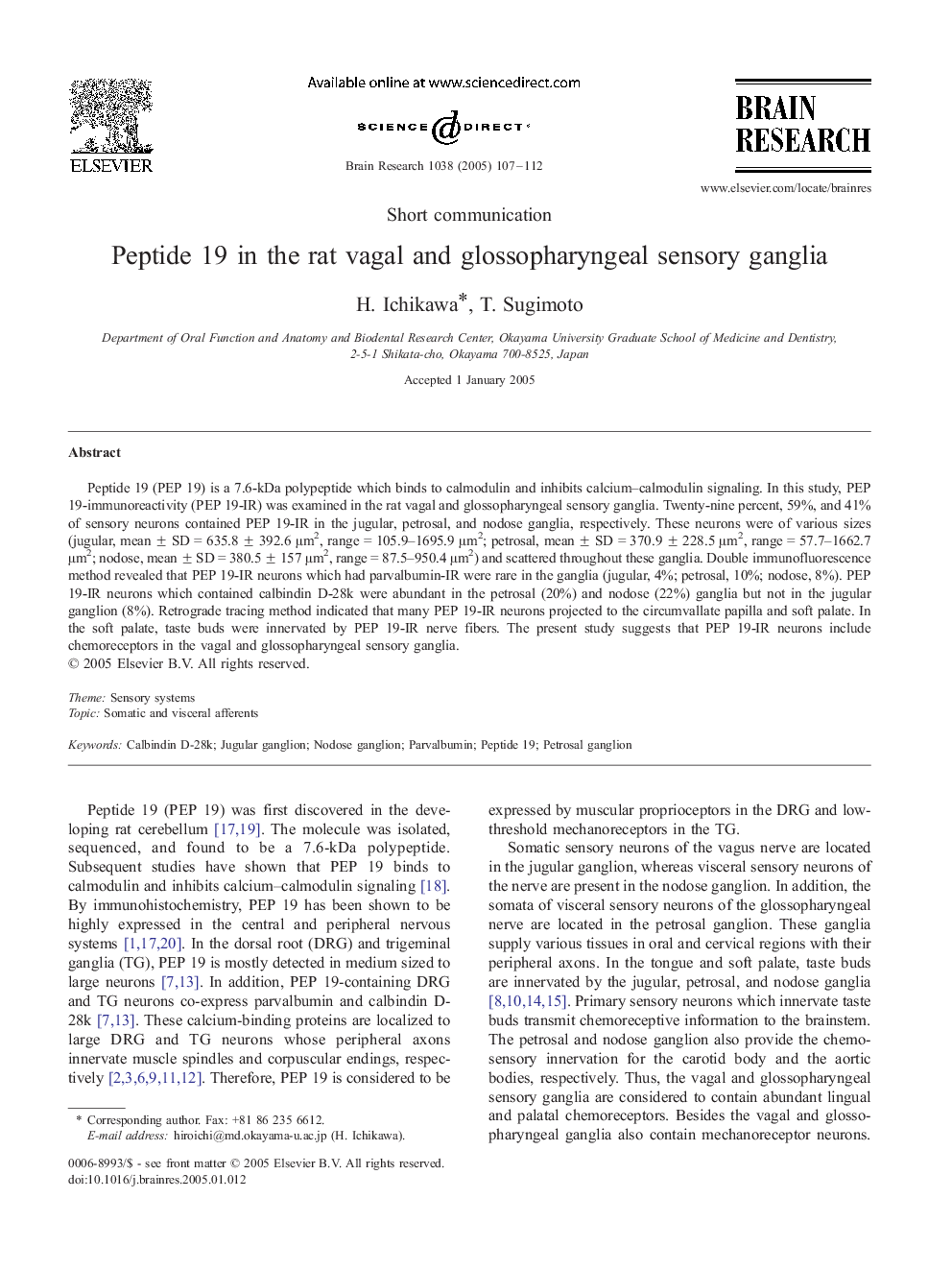| Article ID | Journal | Published Year | Pages | File Type |
|---|---|---|---|---|
| 9416713 | Brain Research | 2005 | 6 Pages |
Abstract
Peptide 19 (PEP 19) is a 7.6-kDa polypeptide which binds to calmodulin and inhibits calcium-calmodulin signaling. In this study, PEP 19-immunoreactivity (PEP 19-IR) was examined in the rat vagal and glossopharyngeal sensory ganglia. Twenty-nine percent, 59%, and 41% of sensory neurons contained PEP 19-IR in the jugular, petrosal, and nodose ganglia, respectively. These neurons were of various sizes (jugular, mean ± SD = 635.8 ± 392.6 μm2, range = 105.9-1695.9 μm2; petrosal, mean ± SD = 370.9 ± 228.5 μm2, range = 57.7-1662.7 μm2; nodose, mean ± SD = 380.5 ± 157 μm2, range = 87.5-950.4 μm2) and scattered throughout these ganglia. Double immunofluorescence method revealed that PEP 19-IR neurons which had parvalbumin-IR were rare in the ganglia (jugular, 4%; petrosal, 10%; nodose, 8%). PEP 19-IR neurons which contained calbindin D-28k were abundant in the petrosal (20%) and nodose (22%) ganglia but not in the jugular ganglion (8%). Retrograde tracing method indicated that many PEP 19-IR neurons projected to the circumvallate papilla and soft palate. In the soft palate, taste buds were innervated by PEP 19-IR nerve fibers. The present study suggests that PEP 19-IR neurons include chemoreceptors in the vagal and glossopharyngeal sensory ganglia.
Related Topics
Life Sciences
Neuroscience
Neuroscience (General)
Authors
H. Ichikawa, T. Sugimoto,
